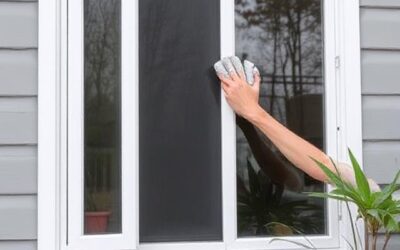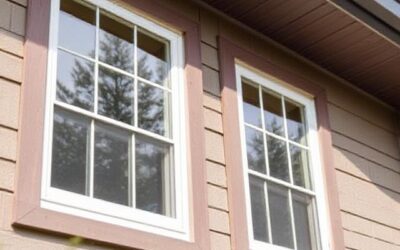Understanding the Needs of Large Glass Structures
Modern architecture often emphasizes transparency, openness, and natural light through expansive glass facades. While visually appealing, these designs come with challenges such as excessive glare, heat gain, energy inefficiency, and reduced privacy. High-rise buildings, corporate offices, retail storefronts, and public facilities all face similar concerns. Selecting the right window tinting solutions for these structures is not simply a design choice—it’s a decision that affects operational costs, employee comfort, customer experience, and building sustainability.
The needs of large glass structures are significantly different from those of traditional buildings. Glass exteriors are more vulnerable to solar radiation, which can increase indoor temperatures and strain HVAC systems. In high-traffic or urban areas, glass also contributes to acoustic and visual distractions without the appropriate level of privacy or light control. Window films serve as an effective solution for addressing these needs without compromising aesthetics or building functionality.
Types of Window Films Suitable for Large Facades
Choosing the right type of window film starts with understanding what each category offers in terms of performance and application. Several types of commercial window tinting products are designed to meet the unique challenges of large-scale glazing.
Solar Control Films are ideal for buildings exposed to high sunlight levels. These films reduce solar heat gain, lower cooling costs, and minimize glare. Available in a range of tints and shades, they allow natural light in while blocking out excessive UV and infrared rays.
Reflective Films are commonly used on large glass buildings to enhance daytime privacy and reduce heat. They offer a mirrored finish from the outside while maintaining interior views. Reflective films also give a sleek, modern look, often used in urban commercial buildings and high-rises.
Low-Emissivity (Low-E) Films help regulate interior temperature year-round by reflecting interior heat back into the space during winter and rejecting solar heat in the summer. These films are especially useful for buildings located in regions with extreme seasonal changes.
Neutral and Ceramic Films offer a less shiny appearance while providing excellent heat and UV rejection. These are often chosen for buildings with aesthetic requirements that demand minimal visual distortion or reflection.
Decorative Films may also be used strategically on certain glass panels for branding, privacy, or visual interest. They come in frosted, patterned, or custom designs and can complement interior or exterior architecture.
Each type of film offers different benefits, and the selection should align with the specific functional and design goals of the building.
Heat Rejection and Energy Efficiency
One of the most substantial benefits of window tinting for large glass facades is energy cost reduction. Without proper solar protection, these buildings can experience extreme heat gain, leading to overworked HVAC systems. Over time, this drives up energy consumption and impacts indoor comfort levels.
High-performance window films significantly reduce the amount of solar energy entering the space. Solar control and reflective films can reject up to 80% of solar heat, helping maintain cooler interior temperatures during warmer months. This reduces dependence on air conditioning, leading to lower utility bills and extended HVAC equipment lifespan.
In cooler climates, Low-E window films prevent indoor heat from escaping through the glass. By improving insulation values, they help maintain thermal balance across all seasons. This dual benefit makes them ideal for buildings looking to meet energy codes or LEED certification requirements.
Beyond cost savings, energy-efficient window films contribute to sustainability goals by reducing the building’s carbon footprint. Property managers and owners looking for long-term solutions often turn to window tinting as a cost-effective way to upgrade the building envelope without full glass replacement.
Glare Control and Employee Comfort
Glare on computer screens or workstations causes discomfort and reduces productivity. In large buildings with expansive windows, especially those facing east or west, excessive glare becomes a daily issue. Even with blinds or curtains, the underlying problem remains unaddressed—solar penetration through the glass.
Commercial window tinting offers a direct and permanent solution. By applying window films with light diffusion and glare-reduction properties, the indoor environment becomes more comfortable and functional. These films maintain visible light levels while reducing the intensity of direct sunlight, creating better conditions for reading, screen work, and overall focus.
Comfortable indoor lighting also reduces eye strain and helps create a professional, calming atmosphere. In retail environments, this can influence customer experience and product visibility. For offices, it can enhance morale and performance. Addressing glare through high-performance window films is not only a visual improvement but also a strategic workplace enhancement.
UV Protection and Material Preservation
Extended exposure to ultraviolet rays can cause irreversible damage to interiors. Flooring, furniture, artwork, merchandise, and equipment fade over time when left unprotected behind untreated glass. This not only affects aesthetics but also represents financial loss due to more frequent replacements and repairs.
Most commercial window tinting solutions block up to 99% of harmful UV rays. This protection helps preserve interior materials and extends their lifespan. Whether it’s a luxury hotel lobby, a corporate boardroom, or a retail display, the long-term benefits of UV protection are significant.
Window films also protect occupants by limiting UV exposure that contributes to skin damage over time. While UV is less noticeable than heat or glare, its effects are lasting. Incorporating UV-blocking films into large glass structures enhances both health and material preservation.
Balancing Natural Light and Privacy
Open spaces often rely on natural light to create an inviting atmosphere. However, privacy becomes a concern, especially in street-facing or high-traffic areas. Achieving a balance between visibility and discretion is crucial in settings like office buildings, banks, medical clinics, and luxury apartment complexes.
Neutral and ceramic films allow daylight in without giving outsiders a clear view of the interior. These films provide privacy during the day while keeping the space visually connected to the outdoors. For higher levels of privacy, reflective or dual-reflective films offer one-way visibility, making them ideal for conference rooms or executive suites.
Decorative films also serve privacy functions in lobbies, glass partitions, and common areas. Frosted or textured films obscure direct lines of sight while letting light through, maintaining a bright and spacious feel.
This ability to shape visibility without artificial lighting ensures comfort and confidentiality, particularly in sensitive or high-profile environments.
Climate Considerations for Film Selection
Weather plays a major role in determining the right window film for a building. A tinting solution that works well in Arizona may be ineffective in Colorado’s variable climate. Regional factors such as solar intensity, seasonal changes, altitude, and humidity levels should guide product selection.
In warmer climates, films with higher solar heat rejection and glare control take priority. These may include reflective and spectrally selective films designed to combat strong sunlight and minimize cooling loads.
In colder areas, Low-E window films become more valuable. These improve thermal insulation by reflecting interior heat inward during winter while still offering solar protection during summer.
For buildings located in mixed climates, dual-function films that balance insulation and solar control provide a practical all-year-round solution. Assessing local weather data and building orientation helps determine which product offers the best value and performance.
Building managers working with professionals like Columbine Window Tint benefit from local expertise that factors in regional performance needs alongside building use and design.
Compliance, Installation, and Maintenance
Large commercial buildings often face strict building codes, energy efficiency standards, and architectural requirements. Professional-grade window films meet a variety of safety, fire, and glazing certifications, making them suitable for use in regulated industries and large-scale construction.
Installation on large glass facades demands precision and experience. The process often involves scaffolding, lifts, or rope access depending on the structure. Scheduling is typically coordinated to minimize disruption to occupants and operations. Experienced technicians assess existing glazing systems and prepare surfaces thoroughly for seamless application.
Maintenance of window films is minimal but necessary to extend performance. Most films are resistant to scratching and discoloration, especially those with ceramic or sputtered metal layers. Cleaning should be done using non-abrasive materials and ammonia-free solutions to preserve clarity and adhesion.
Choosing a reputable provider ensures that films are installed correctly, warranties are honored, and long-term durability is achieved.
Conclusion
Large glass facades offer unmatched aesthetic appeal and transparency but require strategic planning to manage heat, light, and privacy. Window films provide a practical and effective way to optimize building performance without altering architectural design. By selecting the appropriate tinting solutions based on building function, climate, and appearance goals, property managers and business owners can transform expansive glass surfaces into assets that support comfort, energy savings, and longevity.
Columbine Window Tint brings years of experience and localized insight to help commercial and residential clients choose the right films for their buildings—balancing performance, design, and long-term value.











